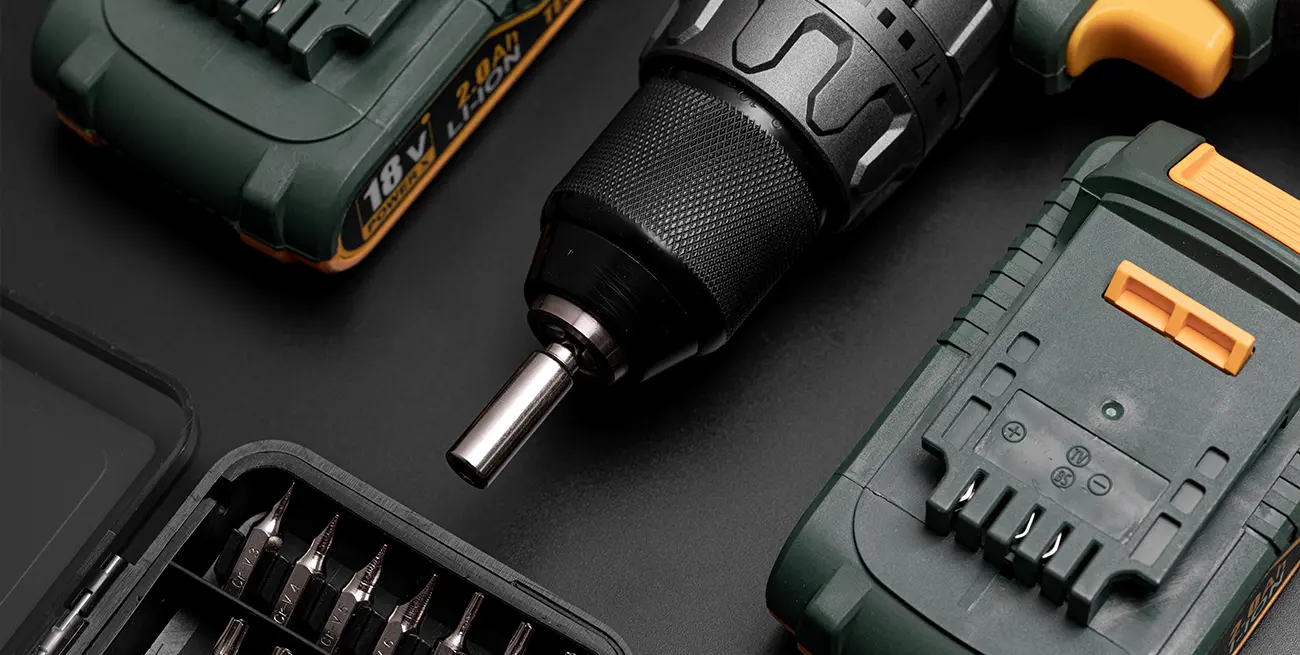Battery Care Tips to Improve the Performance of Cordless Tools

Walk into any industrial workshop, construction site, or service truck, and you’ll see cordless tools running the show. They’re powerful, convenient, and eliminate the hassle of dragging around an air hose or extension cord. But no matter how advanced the tool, its performance is only as good as the battery powering it. Good battery habits keep tools running longer, reduce downtime, and prevent unnecessary replacements. Here’s how to get the most out of every charge.
Charge Before It’s Too Late
Draining a battery completely before recharging is one of the fastest ways to kill it. Lithium-ion batteries—the standard for modern cordless tools—prefer partial charges over deep discharges. When a battery gets too low, cells start to break down, reducing capacity over time. If a tool starts slowing down, swap in a fresh battery instead of squeezing out the last bit of power.
Store Batteries Where They Belong
Heat and cold are the enemies of battery life. Leaving batteries in a hot truck or freezing job site overnight shortens their lifespan. If batteries are too hot, they won’t charge properly, and if they’re too cold, they lose efficiency. The best storage spot is a climate-controlled environment. If that’s not an option, at least avoid direct sunlight and extreme cold.
Use the Right Charger
Manufacturers design chargers specifically for their battery systems. While mixing and matching might seem convenient, off-brand or mismatched chargers can shorten battery life—or worse, cause overheating. Stick with the charger that came with the tool or a manufacturer-approved alternative to ensure safe and efficient charging.
Don’t Leave Batteries on the Charger
A lot of people think leaving a battery on the charger overnight is harmless, but it’s not. While most modern chargers have auto-shutoff features, keeping a battery plugged in for too long can still generate excess heat. Once a battery reaches full charge, remove it from the charger and store it properly until needed.
Rotate Batteries for Even Wear
If you’re using multiple batteries, don’t keep grabbing the same one every time. Rotating between all available batteries ensures even usage, preventing one from wearing out faster than the others. Marking batteries with numbers or color coding makes it easy to track which ones have been used most.
Give Batteries Time to Cool Before Charging
Popping a hot battery directly onto a charger after heavy use is a mistake. Charging generates heat, and if a battery is already warm, it can overheat, leading to long-term damage. Letting it cool down for a few minutes before charging extends its lifespan.
Keep Contacts Clean
Dirty battery contacts lead to poor connections and reduced efficiency. A quick wipe with a clean cloth keeps debris and dust from interfering with the charge. If corrosion appears, a small amount of rubbing alcohol on a cotton swab can clean it up.
Watch for Signs of Wear and Tear
Batteries don’t last forever. If a battery isn’t holding a charge like it used to or feels unusually hot, it may be on its way out. Swollen or cracked casings are another red flag—damaged batteries should be replaced immediately to avoid potential hazards.
Transport with Care
Throwing batteries loosely into a tool bag or the back of a truck is asking for trouble. Terminals can short out if they come into contact with metal objects, creating a serious fire risk. Keeping batteries in their original cases or using protective covers keeps them safe during transport.
Recycle, Don’t Toss
When a battery reaches the end of its life, don’t just throw it in the trash. Many hardware stores and recycling centers accept old batteries to ensure proper disposal. Tossing them in the garbage is not only bad for the environment but may also violate local disposal regulations.
Final Thought: Treat Batteries Like the Investment They Are
Cordless tool batteries aren’t cheap, and treating them as disposable leads to unnecessary costs. A little attention to charging habits, storage conditions, and handling practices keeps them working at full capacity for longer. The payoff? Fewer replacements, less downtime, and tools that perform the way they should every time you pick them up.


